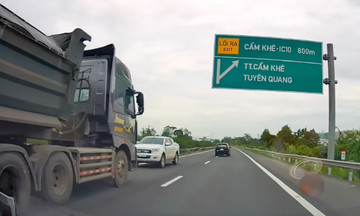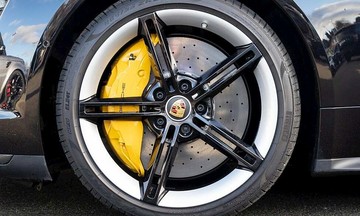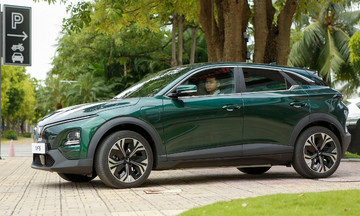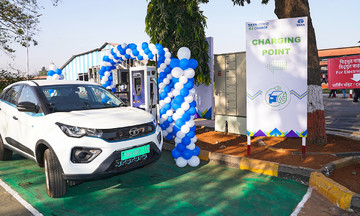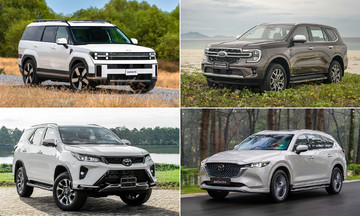In early June, I had the opportunity to accompany Le Hung (Autodaily) on the "Dinh ky tich cung BYD Sealion 6" challenge, a cross-Vietnam journey from Hanoi to Ho Chi Minh City with three teams and three Sealion 6 vehicles. Each car was filled with 60 liters of gasoline, fully charged, and received no additional fuel. The goal was to see which car could travel the furthest.
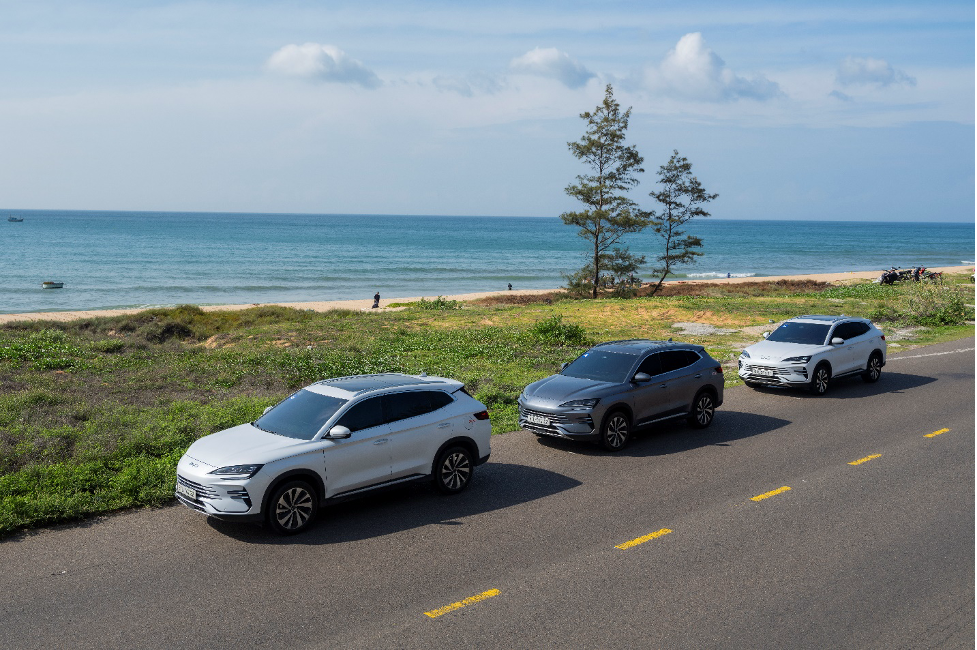 |
Three BYD Sealion 6 vehicles on the journey. Photo: BYD |
Three BYD Sealion 6 vehicles on the journey. Photo: BYD
Le Hung and I were team number 3, and we entered this journey without focusing on winning. We opted for a relaxed, "chill" driving style with smooth, consistent acceleration. The air conditioning was set to 25 degrees, and non-essential features like cooled seats or the high-powered sound system were minimized to optimize fuel consumption. However, what surprised me wasn't the technical figures, but how the car self-adjusted for a smooth driving experience.
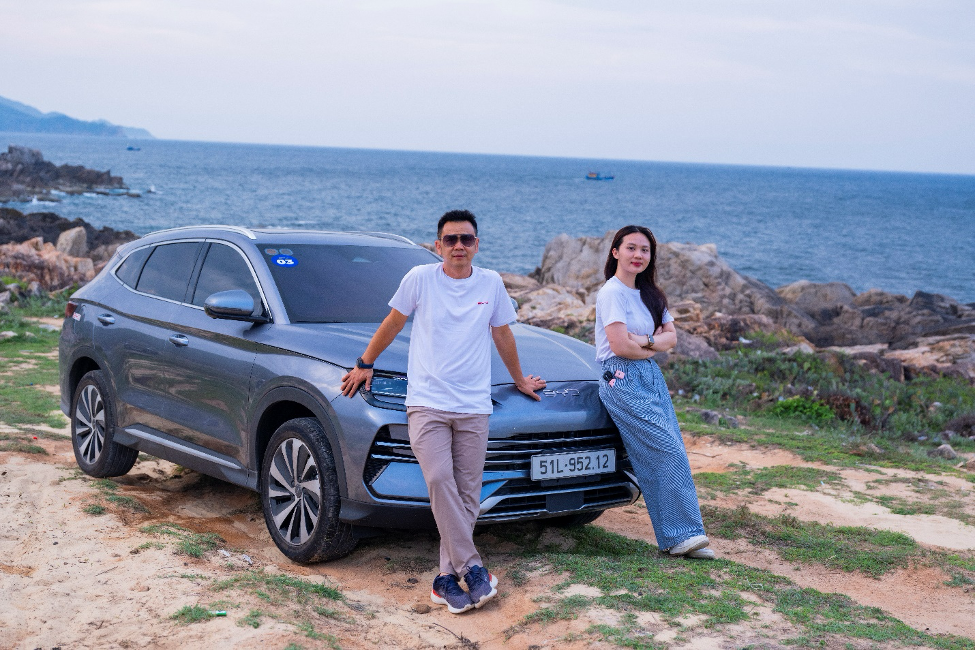 |
Me and my travel companion. Photo: BYD |
Me and my travel companion. Photo: BYD
For the first 300 km, we experimented with the pure electric (EV) and hybrid (HEV) modes along with the regenerative braking system. Based on the data and graphs displayed on the screen, we discovered we could raise the state of charge (SOC) from the default 25% to 70%. From there, we devised a "reverse charging" strategy: whenever the battery dropped to 25%, we switched to hybrid mode to let the car recharge to 70%, then returned to EV mode to enjoy the smoothness of the electric motor. This way, we could optimize both performance and driving experience.
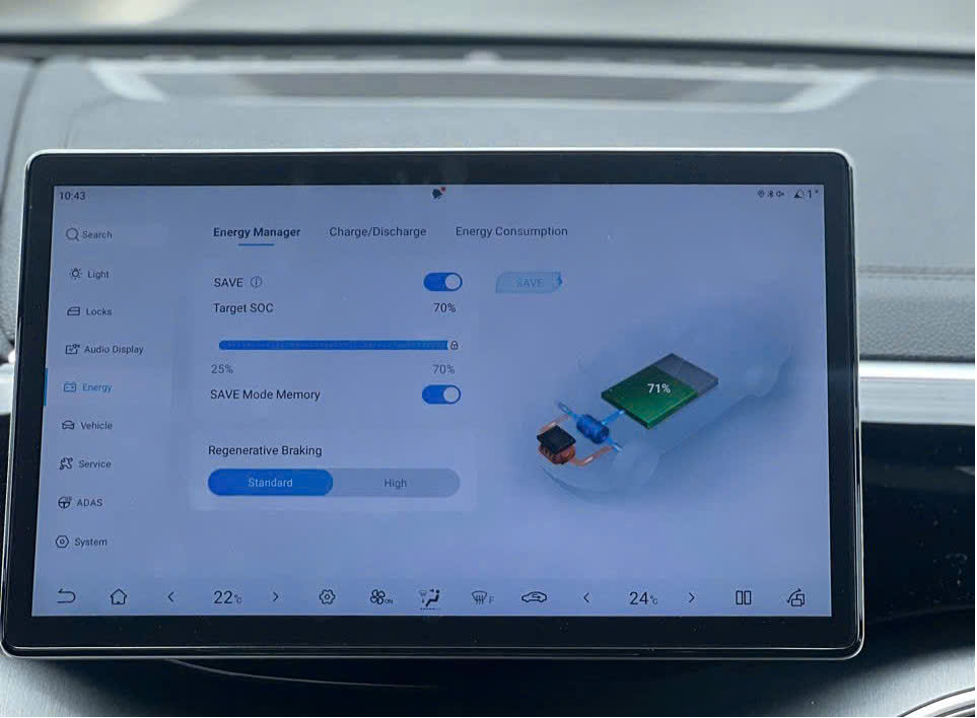 |
How the hybrid system works is shown on the central infotainment screen. Photo: BYD |
How the hybrid system works is shown on the central infotainment screen. Photo: BYD
I was impressed with this mechanism because of the efficient energy compensation. Running in hybrid mode for about 1.6 km charged the battery by 1%. With that 1%, the car could travel 1.9 km in EV mode. This compensation made a difference throughout the journey. During the drive, Hung pointed out that the Sealion 6's advantage comes from the combination of the gasoline engine and electric motor, which helps the car maintain a stable energy level without relying too much on charging stations.
"The Sealion 6 uses a considerably powerful electric motor, providing instant torque which is advantageous for quick acceleration. The optimization between these two power sources is also notable, as the EV and hybrid modes switch automatically and smoothly," he said.
With this tactic, our team maintained the lead for 4 days before losing momentum in the final leg due to steep terrain and inefficient use of regenerative braking. The total distance achieved with one tank of gas and one full charge on the Sealion 6 was 1,770.4 km.
This journey traversed various road conditions: highways, hills, urban areas, and more. As a result, all three teams experienced the different driving modes of the Sealion 6.
Beyond the numbers, this journey provided me with experiences of a high-tech yet easy-to-drive car, a comfortable cross-country trip, and a sense of connection between people, vehicle, and scenery.
Quynh Nhu (Xe Cung)



